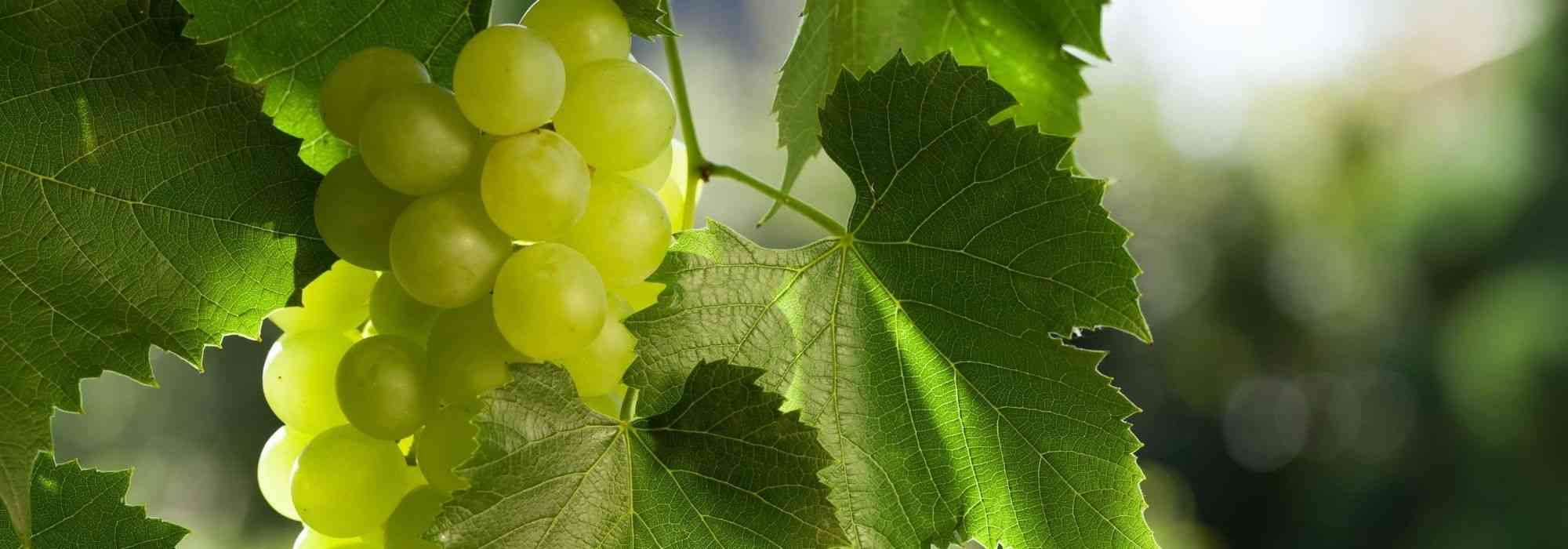
Training a grapevine against a wall
Why, when and how to train vines?
Contents
Grapevine (Vitis vinifera) is a climbing, sarmentous bush that forms a vine-plant branching into several woody climbing stems. Before planting, plan for long term: a vine can live for several centuries! Training involves guiding the vine along a support and securing the woody climbing stems with ties. All grapevine varieties can be trained against a wall. When trained against a warm wall, a climbing vine always provides a pleasingly exotic sight.
When, why and how to train a vine? Discover all our tips to direct its growth on an iron trellis!
And, to discover cultivation conditions for the grapevine, consult our fact sheet: “Grapevine: planting, cultivation, pruning”
Why train grapevines?
Vigorous and powerful, the grapevine quickly forms a genuine liana with a thick, gnarled trunk and can spread over several metres. When mature, it will easily reach 6–7 m in height and spread. Because of its horizontal habit, it is preferable to train it on wire and to trellis it properly. This is why it is important to choose a suitable support on which it can grow.
The aim: obtain optimal harvests of grape clusters and limit fungal diseases by favouring air circulation across the foliar surface.

A grapevine trained on a stone wall (photo fen-tastic-flickr)
Read also
Vine: planting, pruning and careWhat equipment is needed for trellising grapevines?
To achieve good trellising, it is essential to have suitable equipment, in particular tying supplies to guide your vine. It is important not to hinder development of woody climbing stems, not to injure or strangle them, so do not tighten ties too much as this can obstruct sap circulation. We recommend choosing ties that secure stems firmly to their support without damaging them.
- String, raffia to hold most delicate stems firmly without injuring them
- Flexible plastic ties: (our Biflex ties are perfect for attaching shoots to their support without risk of injury). They do not degrade over time
- The galvanised steel wire: useful for trellising, tying or guiding your young vine plants in a durable way
→ Find all trellising equipment you need on our site.
Discover other Grapevines
View all →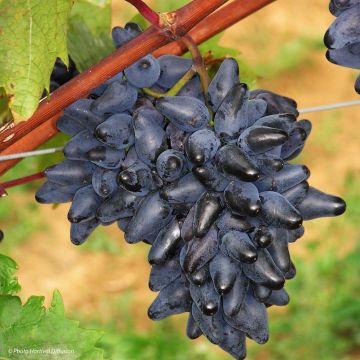
Available in 1 sizes
Available in 1 sizes
Available in 1 sizes
Available in 1 sizes
Available in 1 sizes
Available in 1 sizes
Available in 1 sizes
Available in 1 sizes
Available in 1 sizes
Available in 2 sizes
Choose a suitable support
Twisted stems bearing tendrils on a vine can grow to over 5 m in length over time. A single young vine plant can cover an area of 5–8 m² within a few years. Choosing a suitable, sturdy support is essential. We recommend wood (chestnut or acacia) or metal. Avoid plastic supports: they are neither durable nor strong.
Read also
Grapevine: choose the right varietyWhen should you train plants?
From planting your vine, start guiding young woody climbing stems onto the support. Work on shoots that are still flexible and no more than one year old. Training is then carried out during growth and continues throughout the life of your vine.

Another vine trained on a stone wall (photo barockschloss-flickr)
How to train grapevines against a wall
If several types of training are possible, the vertical cordon is the simplest training form to cover a façade or wall.
- Choose a south-facing, sunny wall.
- Attach two sturdy iron wires or steel cables horizontally and fix them directly to the wall with hooks set at least 10–20 cm from it before you plant your vine.
- Position the first metal wire at a height of 50–80 cm.
- String 4–5 intermediate horizontal wires to support the lateral shoots, spacing them about 20 cm apart.
- Plant your vine, in ground or in a pot, about 20 cm from the support.
- Begin by training the trunk or main stem vertically upwards along its support.
- During growth, direct the lateral shoots onto a horizontal plane: prune the vine to keep only two large opposite shoots.
- To obtain a bilateral cordon (two arms), select two opposite buds and train each horizontally as a cordon.
- Each year, train the shoots along the wires and extend the cordon by 50–60 cm until desired height.
Prune as soon as training begins
Vine must be pruned every year, because grapes appear on the lower parts of that year’s woody climbing stems. So shoots must be renewed each year. Pruning should begin at planting, then several times a year in winter and summer.
Pruning at planting :
- On planting, prune above 2 eyes, that is, cut at base of 3rd well-formed eye to encourage development of 2 shoots and tie the most vigorous to a stake
- At the end of the following winter, keep only the strongest shoot: cut back to 2 buds, remove buds located at base of vine-plant
- Remove suckers and weak shoots that appear at stump level: this will produce more vigorous shoots
Formative pruning :
Keep main permanent vertical stem on which secondary branches will be inserted, spaced 25 to 30 cm apart.
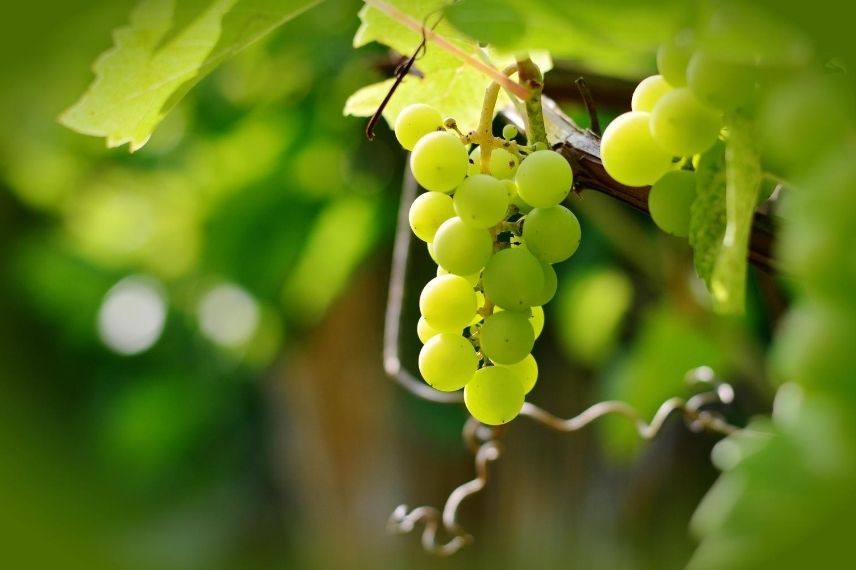
Our advice: Always cut cleanly at a node using a pruning shear.
→ All Ingrid’s advice on vine pruning is on our blog !
Learn more
Discover our other advice sheets dedicated to grapevine :
- Subscribe!
- Contents
































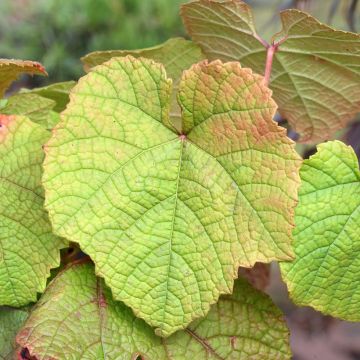

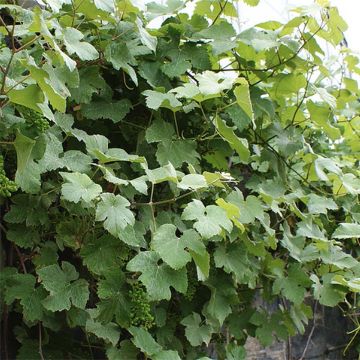
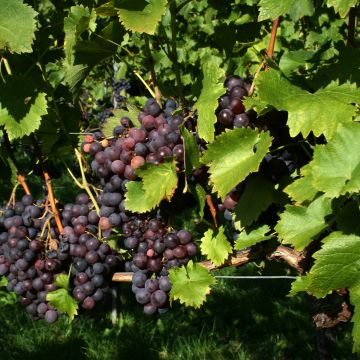
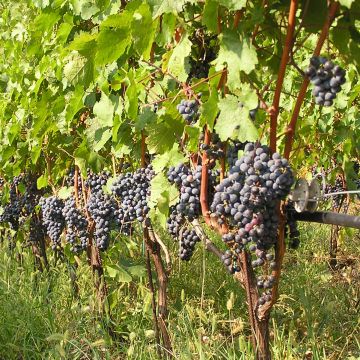
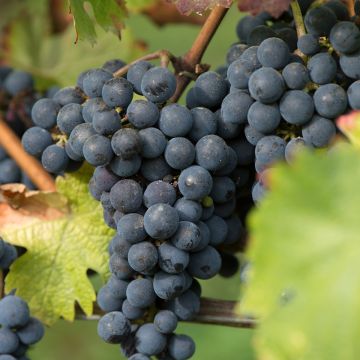
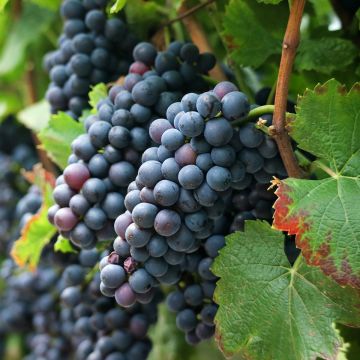
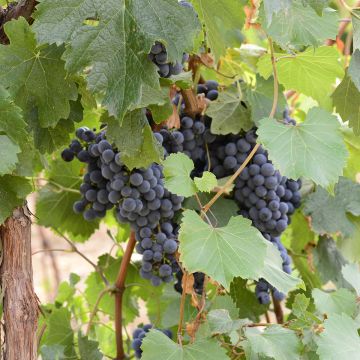

Comments